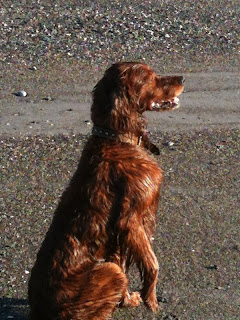Do we really need this ? € millions spent. Could the money spent on this road have been better spent on job creation in the locality?
Political stunt probably.
Traffic volumes are down since the original planning was done for this project.
The Castle of Tralee was no ordinary castle. Straddling the area now the entrance to Denny Street (site of the Pikeman statue), it was the heartbeat of the Earl of Desmond’s liberty of Kerry. The liberty, a share in the royal prerogative, came with the grant of the earldom by King Edward III (1327-77) in 1329 to the southern Geraldines. When the Castle was demolished in 1826, Denny Street was built.
By then the Geraldine earls were long gone. The killing of the rebel Earl of Desmond, Gerald or Garrett, near Ballymacelligott in November 1583 inaugurated the Munster Plantation, which is to Kerry and North Munster (excluding Clare) what that other Plantation is to Ulster, or the Transplantation of Cromwell’s time to Connaught and Clare: it is the defining event of the region’s history. Captain Edward Denny was handed possession of Tralee. His seignory was six thousand acres in extent, a horse-shoe or territory around Tralee Bay with “the village of Traly” in the centre. Piaras Feiritéir, poet and privateer, laid siege to the Castle in 1642, and Lady Kerry (FitzMaurice, Lixnaw) wrote him a famous letter to spare the place; disease wreaked havoc inside. The Dennys would remain a presence to the late nineteenth century. They subverted the 1613 charter and packed the corporation; it took the Municipalities act of 1840 to break their grip. The writing was on the wall from 1832 when Maurice O’Connell, son of “the Liberator”, became MP, defeating Sir Edward Denny. His father, the famous Daniel, held the balance of power at Westminster during the 1830s. Tralee would retain its Westminster seat to 1885.
The port of Blennerville (the name comes from Blennerhassett, the other great family of the Munster Plantation) was developed in the early years of the nineteenth century. Grain was exported from there, and butter for the Cork market. Emigrants for the New World embarked there. From there the Jeannie Johnson set sail. The Canal linked the port to Tralee. It was opened in the 1840s; historically, vessels came to Day Place, the old dock of the town.
Holy Cross of the re-established Dominicans stands near Day Place, fashionable Georgian quarter of Tralee. It was not the first Holy Cross. Founded in 1243 by the Geraldine John of Callan, the Abbey district was just south of the present town Square. It was a very large complex and held the graves of many Geraldine earls. In living memory the meat families lived there; Tralee had two famous bacon factories. The first Denny had his house there, the Castle being in ruins after the wars of the 1580s and 1590s. In 1653 the Prior of Holy Cross, Thaddeus Moriarty, was executed. There followed the era of the Penal Laws against Catholics, ”when dogs were taught alike to run upon the scent of wolf and friar”. The re-established Holy Cross is the legacy of the famous Bishop David Moriarty in the 1860s – he who stated that eternity was not long enough, nor Hell hot enough, for the Fenians; he also re-established the Franciscans in Killarney.
One of the residents of Day Place was Charles George Fairfield, grandfather of writer Rebecca West. Her real name was Isabella Fairfield. Charles married Annie Rowan, sister of Archdeacon Arthur Blennerhassett Rowan, founder and mainstay of The Kerry Magazine (1864-56); Rowan was a pillar of the conservative Corporation, of which he was the last Provost. Rebecca’s skill with the pen is inherited, surely, from the Rowans.
Kerry’s reputation in insurrection owes little to the French-inspired Rebellion of 1798, which had no great impact in Kerry. Part of the reason may be that the powers-that-be were intermarried with the Gael. The Pikeman statue is a legacy of the commemorations a century later. By then the Irish land war had taken place, and the Plan of Campaign of the middle 1880s. The Plan made Kerry a very dangerous place to be. Sam Hussey, famous land agent, had his office where the Grand Hotel is now. They blew up his residence, Edenburn: the story was covered by the Irish Times. Historian Mary Hickson (then residing at Mitchelstown) blamed Tim Harrington and his newspaper for inflaming the people during the Plan of Campaign – and she alleged that the “Dominican Monks of Tralee” were lurking somewhere in the shadows behind him. At the end of it, the Land Acts, the first introduced by PM Gladstone, converted the tenant farmers into owner occupiers.
Maud Gonne (the object of poet W. B. Yeats’ desire) laid the foundation stone for the Pikeman in September 1902. In the late 1930s she was back to unveil a replacement after the first was pulled down during Ireland’s war of Independence (1919-21) by the hated Black and Tans. At the opposite end of the street is the Ashe Memorial Hall (home of the County Museum), named after Thomas Ashe, leader of the ambush at Ashbourne RIC barracks. He died on hunger strike. The Gaelic Athletic Association (football and hurling) helped heal the wounds of the subsequent Civil War. Joe Barrett, pig buyer from Rock Street, outstanding full-back on the four-in-a-row team of 1929-32, is often cited as one of the agents of reconciliation












